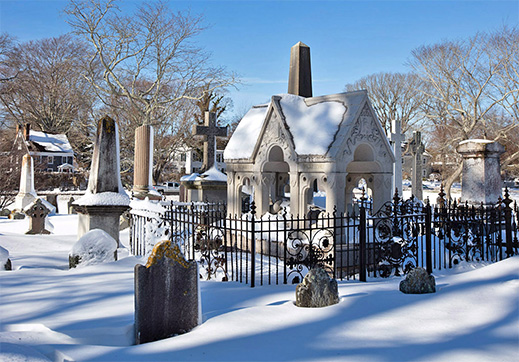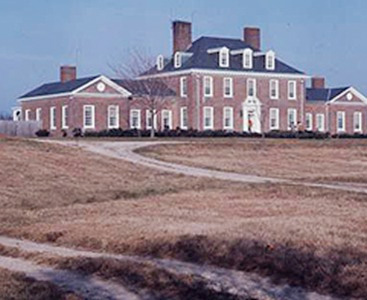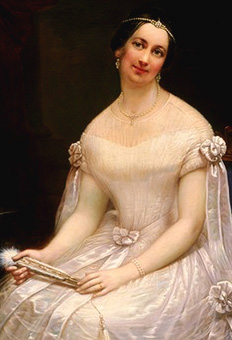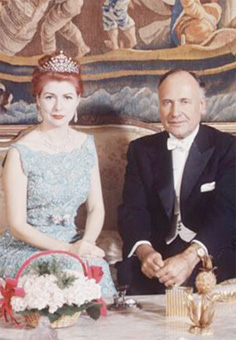Gardiner's Island: A Rich History
Approximately five square miles in size, Gardiner’s Island, a part of the town of East Hampton, has a rich, tumultuous history that spans nearly 400 years of ownership by the same family. It is the only real estate intact in the United States that is part of an original royal grant from the English Crown. The Island has survived Indian wars, pirates, invasion by British forces, war, and family issues. It is home to more than 1,000 acres of old growth forest, the largest stand of white oak trees in the Northeast, 1,000 acres of meadows, rare birds, Indian artifacts, and structures that date back to the 17th century.
Robert David Lion Gardiner, the last heir to bear the name Gardiner, said of his founding ancestors survey of the Island, “When he walked over it he found it had magnificent forests, saltwater ponds and fresh streams that he could dam and use for his livestock.” The island was settled in 1639 by a man named Lion Gardiner after he retained a grant from King Charles I of England.
Gardiner purchased the island from the Montaukett Indians after his support of the tribe during the Pequot War, in exchange for a large black dog, a few Dutch blankets, and some powder and shot. Originally called the ‘Isle of Wight’ after the Isle of Wight in England, the royal patent issued to Gardiner gave him the “right to possess the land forever,” as well as the title “Lord of the Manor.” Lion himself passed away in 1663 at the age of 64. He is buried at the Old South Cemetery in East Hampton.

Lion Gardiner Tomb in East Hampton
The Witch Hunt
In 1641, Gardiner’s wife gave birth to a daughter named Elizabeth, who was the first English child born in New York, and would be responsible for initiating the first witch hunt and witch trial in the American colony. In February 1657, 15-year-old Elizabeth lay deliriously ill in East Hampton. She screamed out from her deathbed, “A witch! A witch! Now you are come to torture me because I spoke two or three words against you!” Lion rushed to his daughter’s side and asked her what she saw, to which she replied, “A black thing at the bed’s feet.” Moments later, she died, spawning a witch hunt which would lead to the arrest of 50-year-old Goody Garlick whose husband worked on Gardiner’s Island as a farmer.
The Visit of Captain Kidd
In June 1699, Gardiner’s Island received a legendary visitor, Captain William Kidd, privateer and pirate. He sailed his ship Adventure Prize into one of the harbors on the Island on his way to Boston where he would attempt to clear his name. With Lion Gardiner’s grandson Jonathan’s permission, he buried $30,000 worth of treasure in a ravine between Bostwick’s Point and the Manor House.
Kidd gave Mrs. Gardiner a piece of gold cloth (it can be found on display at the East Hampton Library) which he captured from a Moorish ship off of Madagascar, as well as a bag of sugar – a rarity at the time. He warned the Gardiners that if the treasure was not there when he returned he would kill them, and he headed off to Boston. While in Boston, Kidd was captured, put on trial and later executed. Governor of New York and Massachusetts, Richard Earl of Bellomont ordered the Gardiners to deliver the treasure to the court as evidence. The treasure included gold dust, silver bars, gold Spanish coins, rubies, diamonds, candlesticks and porringers. One diamond remained in Gardiner’s hands. Some argue that he took it; others argue that it was accidently left in his travel bag. The diamond was given to his daughter Elizabeth who married the Island chaplain, Mr. Green.

Manor House on Gardiner’s Island
During The Wars
Gardiner’s Island played a significant role in many great American wars. During the American Revolution, the Gardiner’s sided with the colonists. Thirteen ships sailed into Cherry Harbor and foraged the Island and the Manor House. Guests at the Manor during the time included Henry Clinton and John Andre, who would at one point exchange toasts with Gardiner’s son Nathaniel, a surgeon in the New Hampshire Continental Infantry. Later in the war, Nathaniel would attend to Andre after he was caught spying with Benedict Arnold and executed.
During the War of 1812, seven British ships and small frigates anchored in Cherry Harbor where they proceeded to conduct raids on American shipping. Crews would go ashore on the island for provisions, and several British military personnel who were killed were buried on the island.
Julia Gardiner Tyler
On May 4, 1820, Julia Gardiner was born on the Island. Her mother, Julian McLachlan, was an heiress to a large fortune, and as a result, Julia grew up in a world of opulence. In 1842, she was introduced to President John Tyler at a White House reception. Julia and the President, 30 years her senior, began a relationship after the death of Tyler’s first wife. Julia, her sister, and her father, David Gardiner, joined the President on the steam frigate, Princeton, where David would lose his life in an explosion.
After the tragic death of her father, Julia agreed to marry Tyler in a small, private ceremony in New York in June 1844. She only served as First Lady for eight months, but during that time she threw many lavish parties and dressed in flamboyant, trendy fashions. She retired with Tyler at their estate, Sherwood Forest in Virginia. During the Civil War however, Julia openly defended slavery, and was forced to return to an anti-slavery New York after her home in Virginia was seized by Union soldiers. She died in Richmond, Virginia on July 10, 1889 at the age of 69.
The Manor: Then and Now
In the late 19th century, famed Long Island poet Walt Whitman wrote of Gardiners Island, “Imagination loves to trace (mine does, any how,) the settlement and patriarchal happiness of this fine old English gentleman on his island there all by himself, with his large farm-house, his servants and family, his crops on a great scale, his sheep, horses, and cows. His wife was a Dutch woman – for thus it is written by his own hand in the old family Bible, which the Gardiners yet possess.”
The original Manor House on the island was built by David Gardiner in 1774, however in 1947, the house, along with its contents were burned in a fire after a guest fell asleep while smoking. The current Manor House, a 28 room Georgian estate, was built in 1947 by Sarah Diodati Gardiner. Diodati died at the age of 90 and left the Island to her nephew Robert David Lion Gardiner, and his sister Alexandra Gardiner Creel. Robert served as the 16th Lord of the Manor until his death in August 2004. He had no heir. The island is run today by Creel’s daughter Alexandra Goelet, the last remaining heir in the Gardiner family.

Julia Gardiner Tyler

Robert David Lion and Eunice Gardiner

